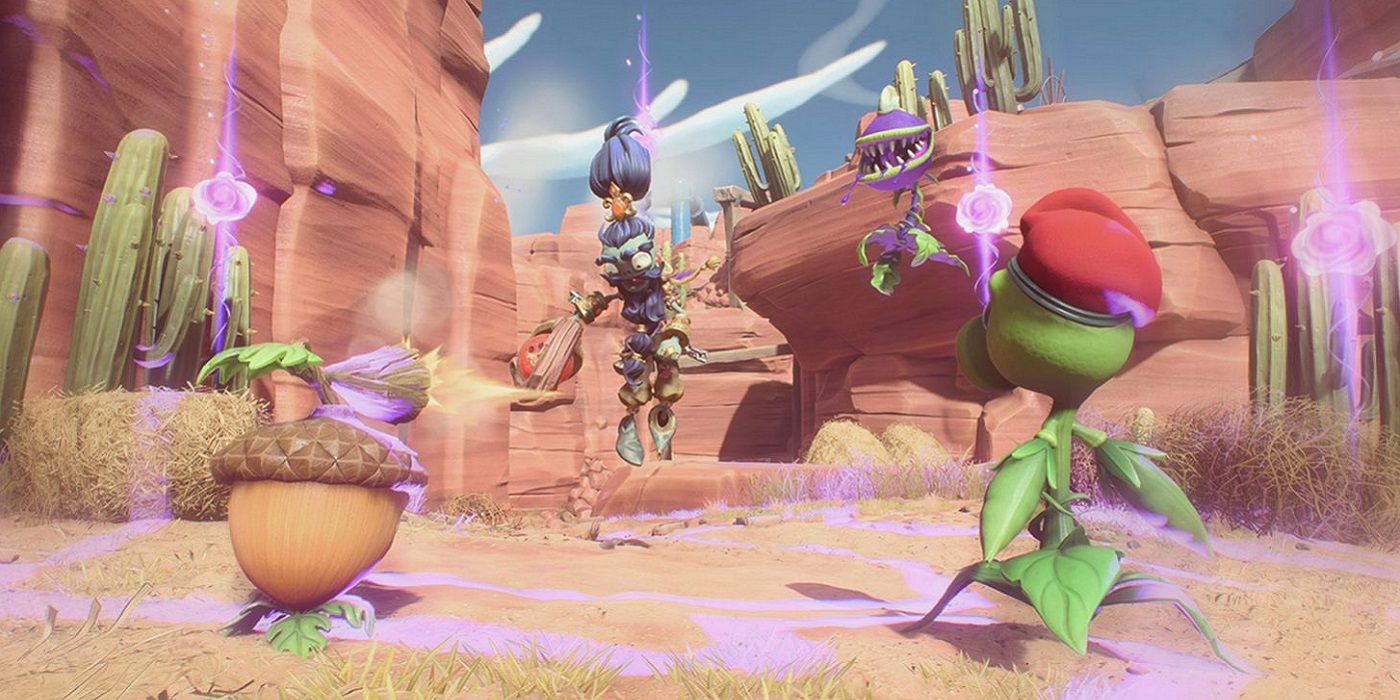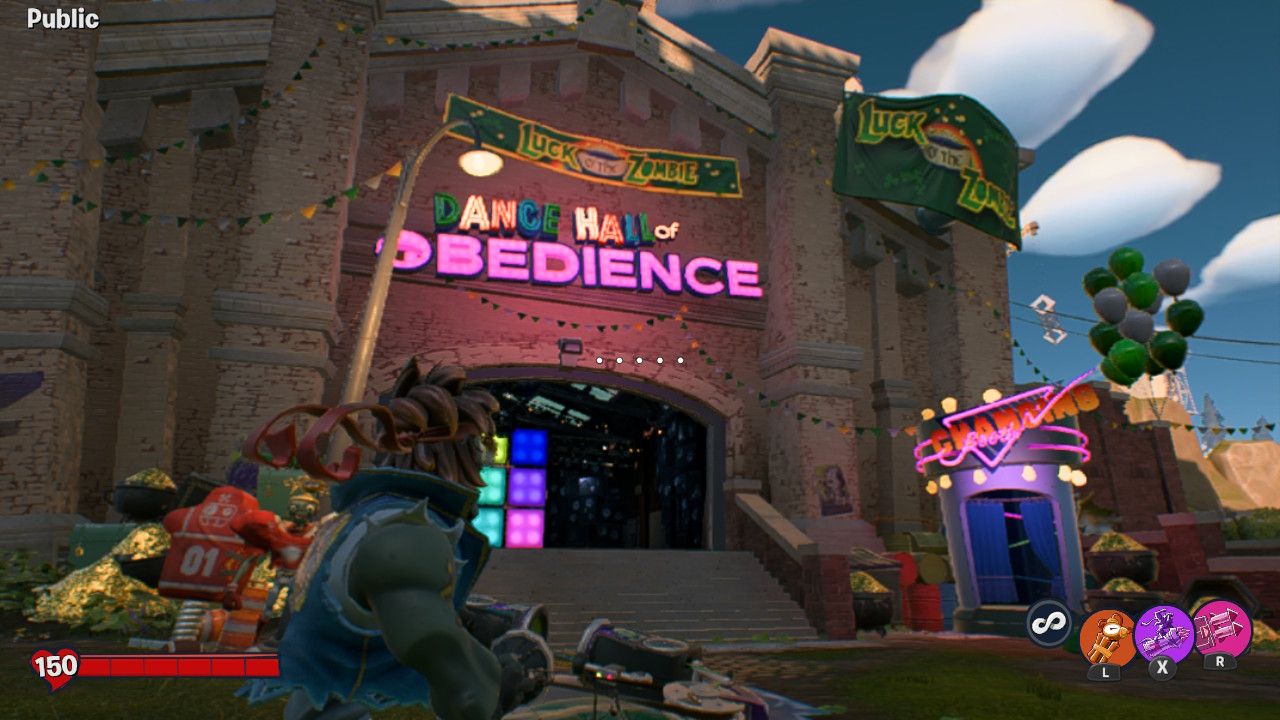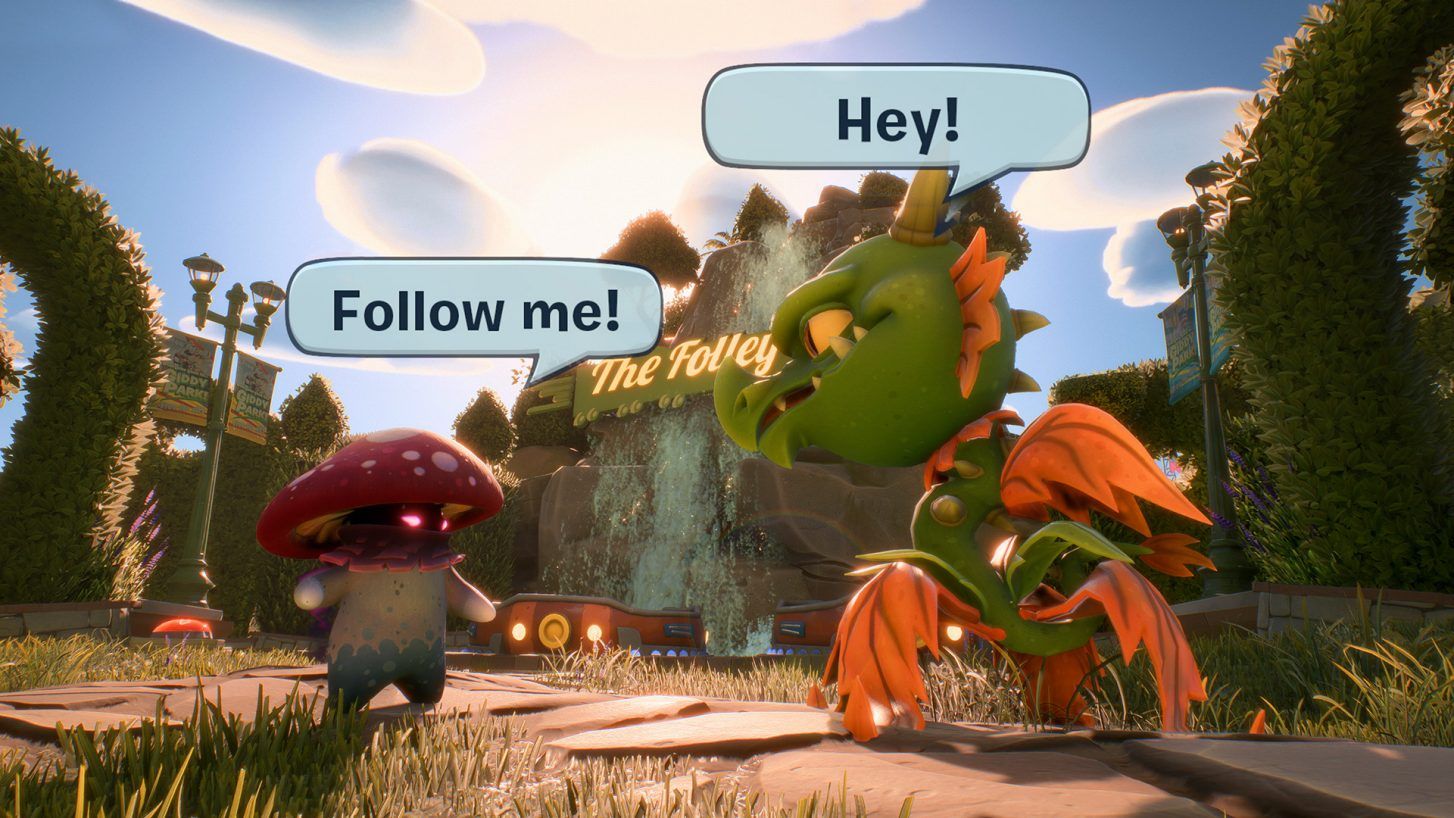While certainly a classic, Plants vs. Zombies series has gone far beyond the original game's defending lawns from the walking dead. This includes sequels to the classic game on mobile and a new series of class-based shooters on console. The third of these games, Plants vs. Zombies: Battle for Neighborville, arrives on Switch just over a year after its original debut. Thanks to its cartoony art style and focused gameplay, Battle for Neighborville ends up working better on Nintendo's portable than many other multiplayer-focused shooters.
Part of this is thanks to Plants vs. Zombies: Battle for Neighborville's impressive single-player modes. The game arrives on Switch fully formed after a year of DLC updates, so it features multiple full adventures that can be enjoyed solo or with friends via co-op. While these modes felt like a sideshow on other versions of the game, they take center stage on a platform that's meant to be portable. There are lots of missions to go through for both Plant and Zombie players, and they're bite-sized enough to fit into a busy on-the-go schedule or a morning commute. PopCap's signature goofy humor is in full force in these missions as well, making them a worthy distraction from multiplayer as well.
Of course, that's just a small part of Battle for Neighborville. PopCap packs in the content with all three Plants vs. Zombies shooters and Neighborville just may be the best example of that philosophy yet. Besides the campaigns, the game includes a multiplayer suite similar in size to the previous Garden Warfare titles. The roster of characters comes over from that game as well with several new additions, but the gameplay and graphical aesthetic have changed significantly. While it's generally up for debate which game depicts this wacky war better, most fans tend to prefer Garden Warfare, and that could affect the long-term multiplayer population of this Switch port.
Speaking of, while players will notice the reduced resolution in the Switch version of Battle for Neighborville, the game maintains a steady frame rate and feels just as playable on Nintendo's hardware as it does anywhere else, which is more than can be said for EA's recently released port of Apex Legends. Outside of a few select classes, combat is up close and personal in Neighborville, which certainly helps keep it running smoothly. However, even when sniping as the Cactus or on the front lines amidst an entire squad of characters releasing cartoony particle effects, there were no performance issues to be seen.
The Switch port also brings the console's signature feature when it comes to shooters, gyro-assisted aiming. In Battle for Neighborville, players can do their best Splatoon impression with precise tilt aiming that combines with traditional controls for a mouse-esque experience. This is certainly an upgrade worth looking into for veterans, although Plants vs. Zombies: Battle for Neighborville's lack of cross-platform matchmaking and cross-progression make it hard to justify a double-dip.
Players likely already know what they're in for the third Plants vs. Zombies hero shooter, and Plants vs. Zombies: Battle for Neighborville makes the jump to Nintendo hardware mostly unscathed. This is the same game players on Xbox and PlayStation have had since 2019, and it works wonderfully in both docked and portable configurations. While the game doesn't reach the heights of Garden Warfare 2, Neighborville presents a bountiful harvest of colorful warfare that's hard to pass up.
Plants vs. Zombies: Battle for Neighborville is available today on Nintendo Switch, and is also available on PlayStation 4, Xbox One, and PC. Screen Rant was provided with a digital download code for the purpose of this review.



